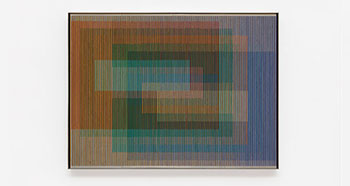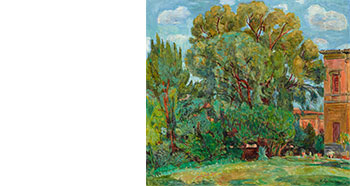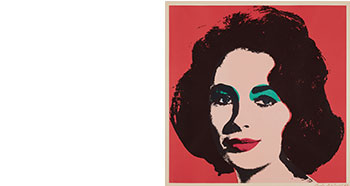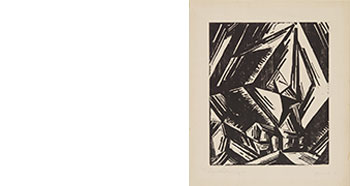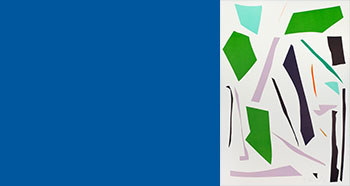Op-Art
Op Art artists not only paint with brush and paint but incorporate the knowledge of the function of the human eye. The weaknesses of the organ become the strength of the art when illusory realities are created from colours and forms which dissolve on closer inspection into mere geometric compositions.
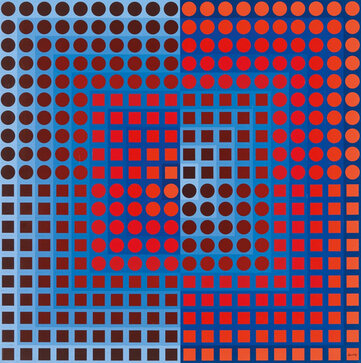
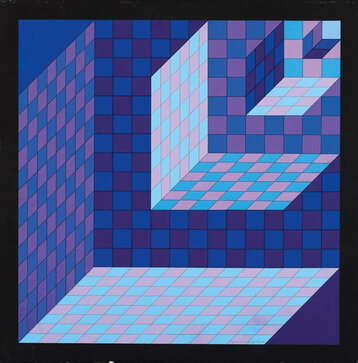
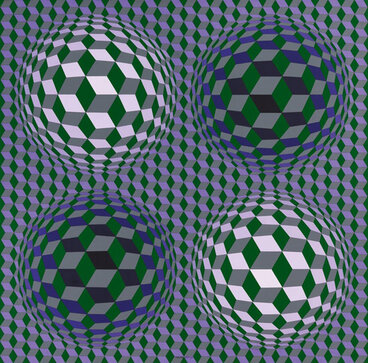
Op Art - Table of contents
What is Op Art?
Written in full, Op Art stands for ‘optical art’. The usual definition of Op Art describes it as a form of Concrete Art, the principles of which exerted a noticeable influence on Op Art and had a decisive effect on its characteristic features. Op Art is essentially based on the principle of optical illusion: far from representation, Op Art does not aim to depict, but create an illusion. The play with geometric forms and colours can be so convoluted and sophisticated that looking at a piece of Op Art can be dizzying.
In their structure Op Art pictures often have a certain affinity to the Dutch painter Piet Mondrian (1872-1944) and his grid structure of vertical and horizontal lines, but are primarily rooted in the principles of Bauhaus and represent a reaction of art to the scientific findings and technical advances of the time. Two forms of Op Art emerged: kinetic and static Op Art. Kinetic Op Art reaches three-dimensionally into space, whilst the static remains two-dimensional.
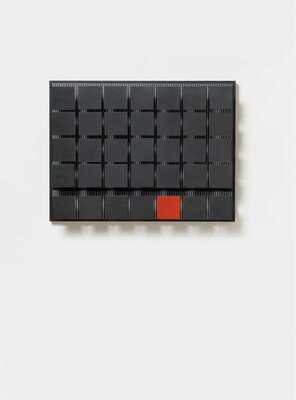
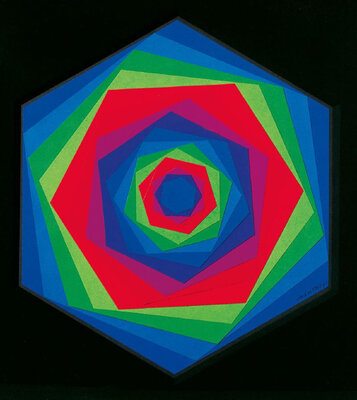
The genesis of Op Art
Op Art was founded by Victor Vasarely (1908-1997), a Hungarian-born painter. He was inspired by Constructivism and established his ‘optical kinetics’ in Paris in the 1950s, a version of kinetic art based on mathematical calculations and carefully balanced geometric forms that trick the human eye. Op Art did note emerge in a vacuum but was also based on ideas that had been developed at the Bauhaus by László Moholy-Nagy (1895-1946) and other artists such as Josef Albers (1888-1976) which can be understood as a counter-reaction to Tachism, which emerged in Paris at around the same time.
The origin of the name is unclear; the term is said to have emerged in 1964 in the run-up to the exhibition The Responsive Eye in the Museum of Modern Art in New York, whilst the painter and sculptor Donald Judd (1928-1994) – generally attributed to Minimalism – is sometimes cited as the originator when he used the term ‘Op Art’ to describe the Optical Paintings exhibition of the painter Julian Stanczak (1928-2017).
Although Op Art is considered an abstract art form, the first true Op art painting was not free of figurative elements: Zebra, created as early as 1937, rouses the illusion of two frolicking zebras with its cleverly arranged white colour fields on a black ground, and is still one of the most frequently reproduced Op Art pictures.
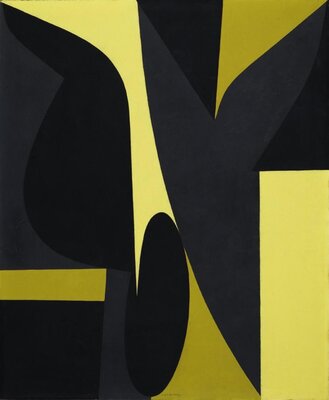
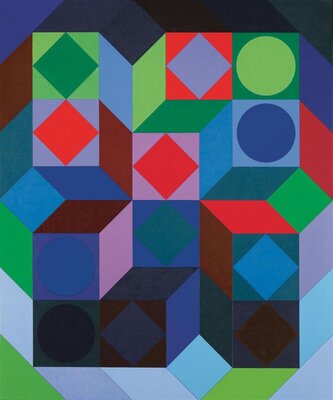
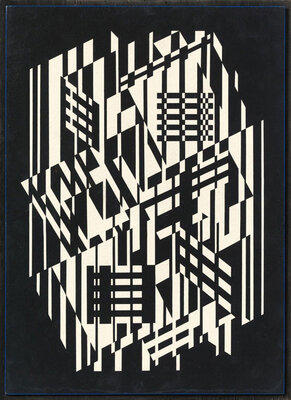
Well-known Op Art artists
Once Victor Vasarely introduced Op Art to the art world, it was enthusiastically taken up in the USA and western Europe in particular. Alongside Vasarely, the British painter Bridget Riley (born 1931) and the Venezuelan painter and sculptor Jesus Rafael Soto (1923-2005) played a decisive role as important pioneers in establishing Op Art.
With his paintings praised for their vibrant colours and play with light, the US American graphic artist and painter Richard Anuskiewicz (1930-2020) is also considered a pioneer of Op Art. His choice of a romantic approach was unusual for Op Art, countering the mechanistic principle of geometric formulaity in a fascinating way.
In Germany, the ideas of Op Art were taken up and developed further by Lothar Quinte (1923-2000) and Klaus Kammerichs (born 1933), whilst in Austria the painters Hildegard Joos (1909–2005) and Helga Philipp (1939–2002) were among the most prominent representatives of the widely embraced art movement.
Victor Vasarely’s son Jean-Pierre Vasarely (1934-2002) also followed in his father’s footsteps and became a major figure pf Op Art under the artist’s name Yvaral. An Op Art artist of the second generation is Philip Taffe (born 1955), who reflects the ideas and concepts of his predecessors from the 1960s and has found his own approach.
Many of the so-called Op Art artists were rather unhappy with this designation; Josef Albers, for example, considered the term ‘optical’ to be superfluous, for every visual art is always also optical and one does not speak of acoustic music or a haptical sculpture. Ludwig Wilding (1927-2010) did not want to be an Op Art artist either, but was categorised to the movement.
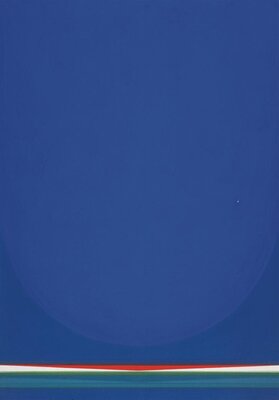
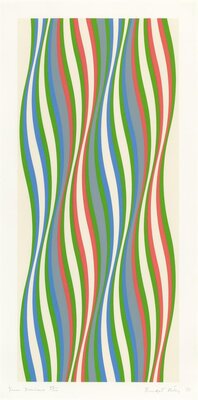
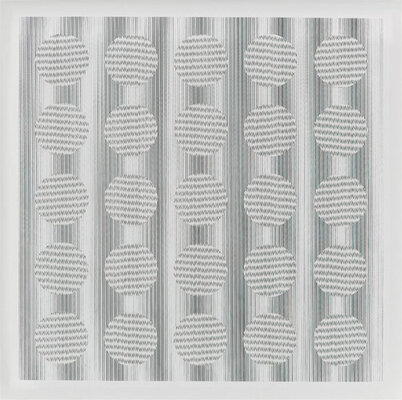
Influence and impact of Op Art
Because the common characteristics of Op Art favoured serial production, many Op Art pictures were widely distributed. On the one hand, the proximity to design and ornamentation guaranteed a far-reaching influence right up to the present day, but on the other it was repeatedly criticised in the contemporary art scene for its seemingly far too commercial orientation.
Despite these accusations, Op Art – drawing on movements such as Dadaism, Futurism, Constructivism, Cubism and Neo-Expressionism – has itself had a significant impact on art history and influenced generations of artists, including the avant-garde Düsseldorf artists' group ZERO led by Heinz Mack (born 1931) and Otto Piene (1928-2014).
Op Art unquestionably owes its great popularity also to its effective compositions which employ the millenia-old principle of optical illusion that was already used by magicians in ancient times to captivate a large audience. However, Op Art has always been more than mere hoax and fairground magic.
The Op Art artists were not interested in superficial showmanship, but saw their work as an artistic exploration of the human capacity for perception. For certain representatives such as Vasarely and Albers, Op Art pictures and reliefs were based on complex and carefully considered formulas and principles, whilst in other cases they embodied the result of free creative impulses.
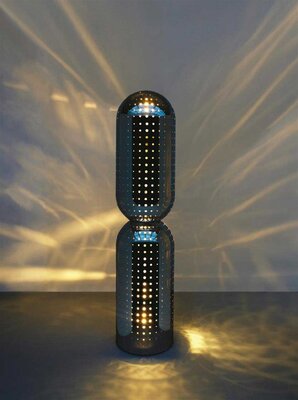
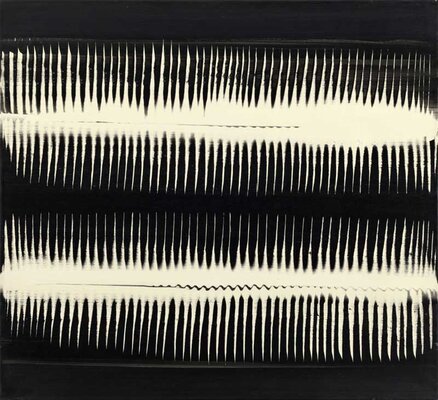
Op Art is still in demand today
Kunsthaus Lempertz also regularly sells Op-Art paintings at auction: work by the Op-Art artist Jesus Raphael Soto has often successfully been offered for auction; Vibration (unofficial title), signed and dated in black pen, fetched 76,160 euros, many times higher than the original estimate of 20,000 euros.
Although Bridget Riley is also not happy with being categorised as an Op Art artist, she was able to achieve considerable success as such at Lempertz: The serigraph on Plexiglas with the unofficial title Fragment 7 far exceeded the initial estimate of 6,000 to 7,000 euros with a result of 42,160 euros.
Another major representative of Op Art offered at auction at Lempertz is Adolf Luther (1912-1990). The German sculptor was inspired by shards of glass which refract the light and he created his Sphärisches Hohlspiegelobjekt (Spherical Concave Mirror Object), which – certified by the Adolf Luther Foundation in Krefeld – realised 59,520 euros at Lempertz.
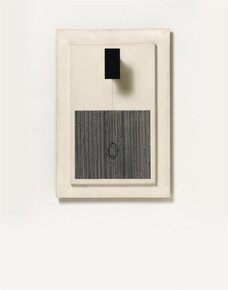
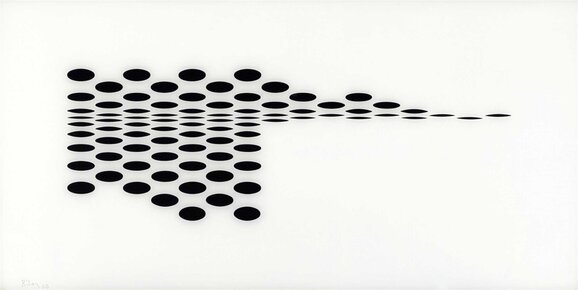
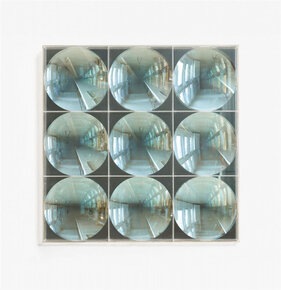
Upcoming Auctions - Op Art
Auction
Preview
2 – 3 May
Berlin
23 May Vernissage
24 – 25 May
Brussels
23 – 28 April
Cologne
29 May – 3 June
Catalogue
Coming soon...
Auction
Preview
2 – 3 May
Berlin
23 May Vernissage
24 – 25 May
Brussels
23 – 28 April
Cologne
29 May – 3 June
Catalogue
Coming soon...
Auction
Preview
2 – 3 May
Berlin
23 May Vernissage
24 – 25 May
Brussels
23 – 28 April
Cologne
29 May – 3 June
Catalogue
Coming soon...
Auction
Preview
2 – 3 May
Berlin
23 May Vernissage
24 – 25 May
Brussels
23 – 28 April
Cologne
29 May – 3 June
Catalogue
Coming soon...
Auction
During this time you can bid on the lots of the auction online.
Register now to participate in the auction! Please note that a separate registration is required for our online auctions.
Please also note that due to the new Money Laundering Act, we are obliged to carry out an identity check on our customers. You can easily and securely upload the necessary documents on our website. You will find the corresponding link on the right.
Preview
Catalogue
Coming soon...
Our passed Op Art-Auctions
Op Art prices
A few examples of Op Art prices auctioned in Lempertz auctions:
| Op Art | Auction - Lot Nr. | Object | Price |
|---|---|---|---|
| Op Art | Auction 1060 - Lot 625 | Heinz Mack - Untitled (Lichtrelief) | 310.000 € |
| Op Art | Auction 1155 - Lot 38 | Heinz Mack - Lichtfelder (Chromatische Konstellation) | 300.000 € |
| Op Art | Auction 904 - Lot 449 | Victor Vasarely - Ibadan-Pos | 220.150 € |
| Op Art | Auction 1079 - Lot 453 | Victor Vasarely - Volans | 130.200 € |
| Op Art | Auction 890 - Lot 470 | Jesus Raphael Soto - Untitled (Vibration) | 76.160 € |
| Op Art | Auktion 1204 - Lot 268 | Adolf Fleischmann - Untitled | 57.960 € |
| Op Art | Auction 868 - Lot 612 | Jesus Raphael Soto - Centro Azul | 57.120 € |
| Op Art | Auction 1071 - Lot 741 | Bridget Riley - Ohne Titel (Fragment 7) | 42.160 € |
| Op Art | Auction 1156 - Lot 403 | Ludwig Wilding - Single K 15 | 5.000 € |
| Op Art | Auction 948 - Lot 576 | Lothar Quinte - Untitled | 4.800 € |
| Op Art | Auction 858 - Lot 475 | Philip Taaffe - Untitled | 1.666 € |
Sell Op Art - Object evaluation & Consignment
Do you own a work by a Op Art artist and would like to sell it?
Have your work of art valued without obligation and free of charge.
Our experts will contact you with their assessment of your works/works of art as soon as possible.

